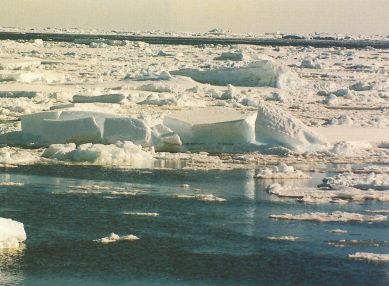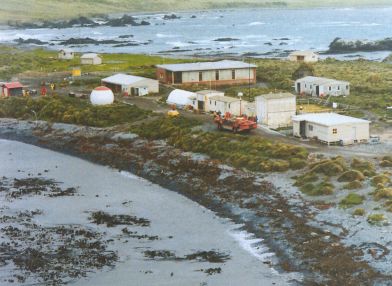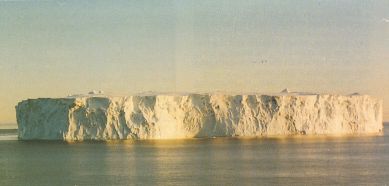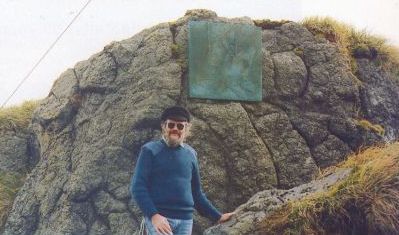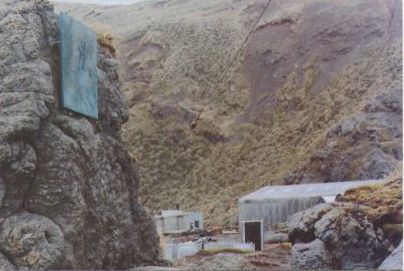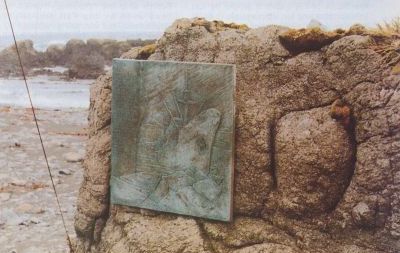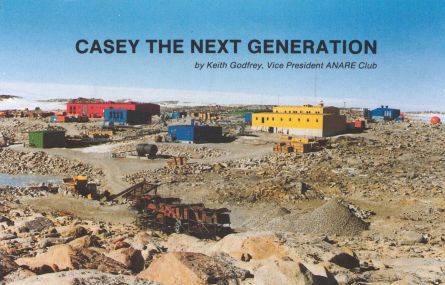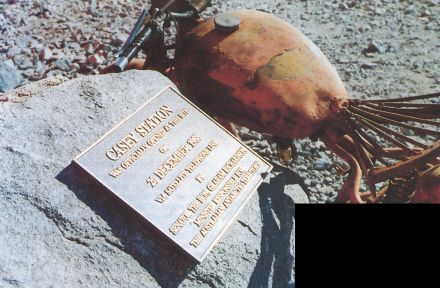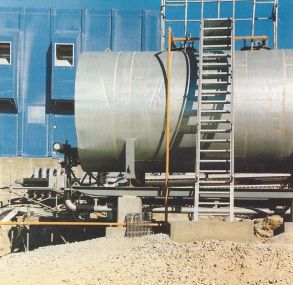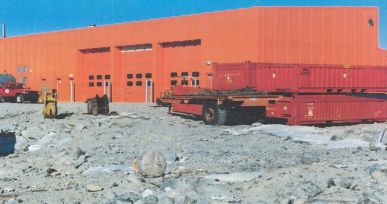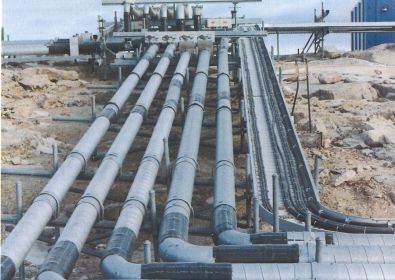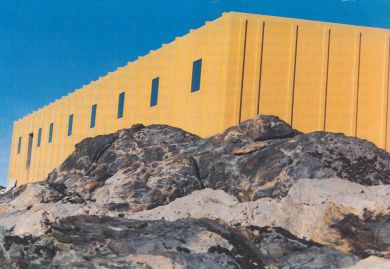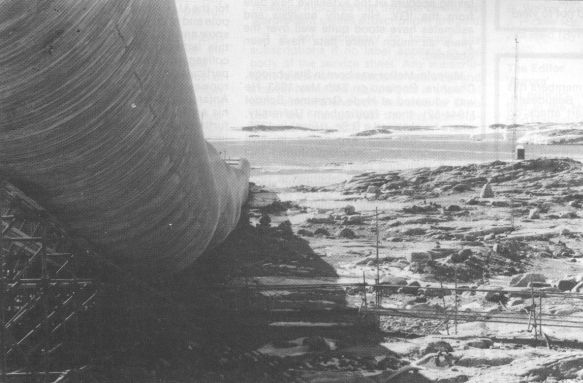Keith Godfrey ANARE, Club Vice President, Club Representative 1990-1991 – MV Icebird
The ice
I had forgotten the ice
You remember so little
Photographs never show true
Wonder jujst wonder
Giant bergs
Little Packs
Massive stacks
The colours brightly blinding blue
The sun turns white a golden hue
I had forgotten the ice
Emerald Island, gleaming bright
Verdant slendor next oceans might
Towering cliffs above the sea
Jagged rocks
Vast runs of scree
Surf upon the black shore rolls
Elephant seals wallow
Penguins taake strolls
We came upon St Patricks Day
To second Eire
Midst southern spray
A million million ice cubes
Glinting in the sun
Little out of water
Mostly out of view
Sun and waves caress you
Wind wafts agin your brow
Loving touches reach out for you
Slapping strength
Tearing at your soul
In time you”ll fade and shimmer
Just water in a bowl
One of the major objectives to be completed as part of my recent visit to both Casey and Macquarie Island in March 1991 was to obtain first hand information on the Nella Dan commemorative plaques and more substantial photographic records of their location and condition.
The original plaque was presented by the ANARE Club to be located on Macquarie Island near the site of the last resting place of the Nella Dan.
The site chosen by the Antarctic Division and staff at Macquarie Island was a small rocky outcrop located midway between the main station buildings and the radio and meteorology buildings (refer to photo 1). This site also includes an anchor from Nella Dan and other historical items.
While the plaque is quite noticeable if you are away of where to look there is no immediate indication to people passing along the main track that the plaque is located nearby or the reason for its placement. A small pointer or indicator board could be located on the main track indicating the site of the commemorative items.
Members can be more aware of the exact location and siting of the Macquarie Island plaque from photographs take from a number of angles. The general condition of the plaque is very good and it seems safe from any incidental damage except natural weathering.
As a site of significant interest especially to the large number of ANARE expeditioners whose initial and parting contact with Antarctica was the “little red ship”, as well as to the increasing number of tourists who visit Macquarie Island, the importance of this reminder of the ship which served us so well for so many years deserves to be highlighted as a major part of any itinerary of historical sites on Macquarie Island.
A small copy of the original plaque is located mounted on the wall near the main bar in the new Red Shed accommodation building at Casey. This plaque shares pride of place with numerous other plaques presented by other groups involved with operations at Casey over the years. This small plaque is in very goode condition and being indoors ther is little likelihood of the plaque being damaged.
As Icebird steamed slowly to its berth on the night of 8 March 1991 and the welcoming flares of expeditioners anxious to return to Auystralia and their loved ones, passengers who had never before been to this part of Antarctica were anticipating their coming encounter with the completely rebuild CASEY station.
Next morning the LARC shuttled everyone ashore and the anticipation was complete.
The new complex at CASEY is completely different from the then state of tghe art design of the old tunnel and a shock to anyone who has been previously associated with expeditions to the tunnel in the middle 1970’s..
The first impression is of the rainbvow effect of all the different coloured buildings which make the station stand out from the uniform grey and white of the surrounding environment. You do not need to know the use of the buidings, you can just identify them by the colour although yellow has now been used for both the Communications Centre and the recently constructed Science Laboratory and blue for bothPowerhouses and the Met balloon launch building.
The other major impression is the oil refinery effect caused by all the piping being constructed above ground which does have a great similarity to the pipework at oil installations. Since 1985 construction has been going on over each summer and throughout the winter in some instances, so that by 1991 the major construction program has been completed and only some fitting out remains. Over the next summer it is planned to demolish the tunnel and return all the component parts to Australia leaving the hillside down to the harbour as close to original condition as possible.
Members who have never been to or never seen the new station atr Casey may be interested in the accompanying photographic guide of the new Casey which shows how a modern Antarctic station now appears and how the next generation will continue to evolve.
A number of ANARE Club representatives have recently visited the old Americal/Australian station of Wilkes, near the current site of Casey station, including Ian Mackie in 1989 and Dick Saxton in 1986. When both Ian and Dick reported back on their visits, the impression was that the station was rapidly becoming engulfed in ice and soon nothing would be visible apart from the odd chimney and antenna. The two photographs by ian show the appearance of the station area when he was there.
This year I was able to go across to Wilkes from Casey during my visit, on behalf of the Club, to Antarctica. The reaction from my travelling companions and myself as Wilkes came into view was one of astonishment. The whole station area was almost completely free of ice and snow, the buildings and most of the ground suface are almost completely exposed. Unfortunately what is also exposed is the vast amount of junk which was left lying around in the early days and then became buried in snow. I believe that Wilkes was the last station to be constructed by the US in 1956-7, when they set up their IGY bases. All left-over supplies were dumped there. Certainly after the Australian take-over in 1959, early ANARE parties were often unearthing caches of unusual equipment.
Wilkes is an are of historical interest and parts of the station whould be preserved. However its attraction is lessened by its general appearance of disorder. A good clean-up of the area is called for and I suggest that the ANARE Club could provide volunteer labour (highly experienced in Antarctic conditions) to do the job.
The opinion of the Meteorological staff at Casey is that the large scale melt of the ice cover is not associated with the greenhouse effect or ozone layer but rather part of a cyclic weather pattern.
Some final views before it is dismantled this summer (1991-1992)
(Photos by K. Godfrey).

